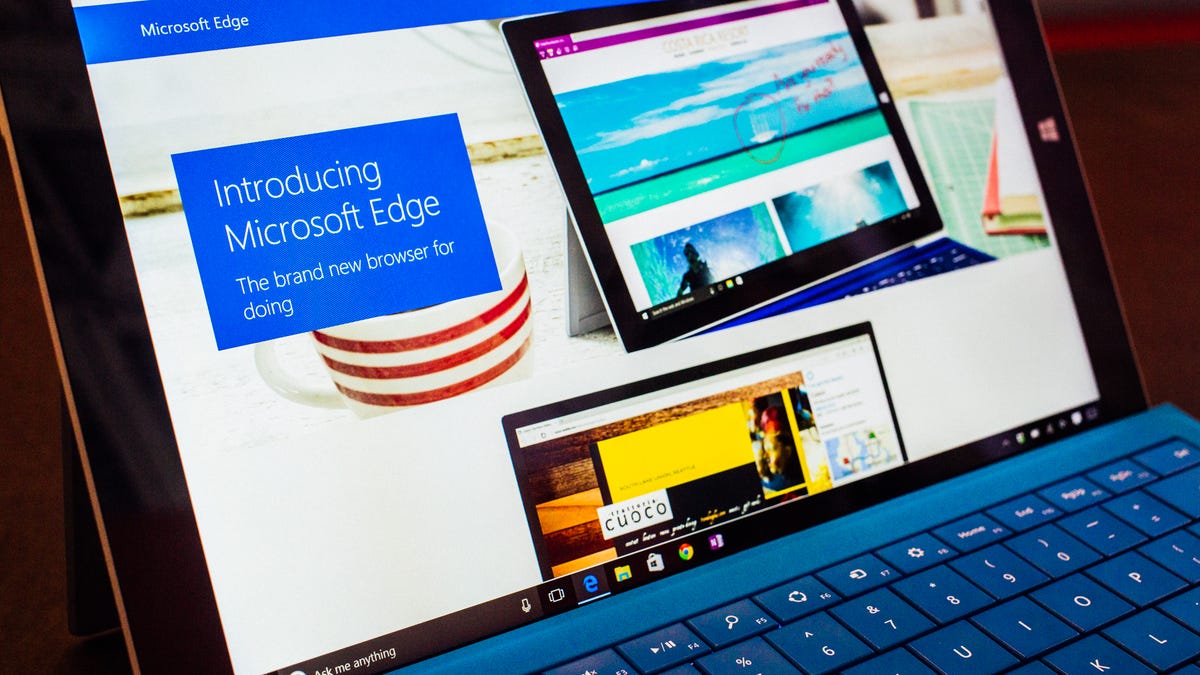The complete guide to switching to Microsoft's Edge browser
Edge is the only browser that supports 1,920x1,080-pixel resolution Netflix playback -- is it time to make the switch?

Microsoft Edge still has a way to go before it wins any "browser of the year" awards, but it's a much better browser after the Windows 10 Anniversary Update.
The improvements include support for browser extensions, a right-click history menu and click-to-play Flash video. In other words, it might be time to consider switching over to Edge as your primary browser (especially if you're an Internet Explorer user).
Here's what you need to do to make the switch.
Make Edge your default browser
If you just installed Windows 10, Edge is already your default browser. But if you switched your default browser to something else in the past, you'll need to change it back.
You can do this by opening Edge and clicking the menu (...) button in the upper right corner and clicking Settings. At the top of the settings menu, you'll see a button that says Change my default. Click this button to open the Default apps menu in the Settings app. Under Web browser, click your current default browser and choose Microsoft Edge from the menu that pops up to switch.
Import your bookmarks
Xmarks doesn't work with Edge yet, so you'll need to bring your bookmarks over manually. To do this, open Edge, click the menu (...) button and go to Settings. Under Favorites, click View favorites settings. Under Import favorites, tick the browser(s) you want to import bookmarks from and click Import.
Edge does not support importing bookmarks from an HTML file yet -- if you have your bookmarks saved in an HTML file, you will need to first import them into a different browser (like Internet Explorer or Google Chrome) and then import them into Edge from that browser.
Set your homepage
Edge offers four options for your homepage: The Microsoft Start page, a "new tab" page, the pages from your previous sessions, or a specific page or group of pages. To set your homepage, open Edge and click the menu (...) button and go to Settings. Choose your desired option from the Open Microsoft Edge with menu.
If you choose New tab page, your homepage will be the same as your new tab page. You can set your new tab page to top sites and suggested content, top sites, or a blank page, directly under the homepage option.
If you choose A specific page or pages, you will need to type in the URL of the page you want to use and click the save icon.
Your homepage will only display when you open a new Edge window. If you want to keep your homepage handy, you can add a home button to the Edge toolbar.
Change the search engine
Like most modern browsers, Edge allows you to perform web searches by typing text into the address bar. Edge's default search engine is Bing, naturally, but you can change this to any search engine that uses OpenSearch technology. Google, Yahoo, and even Facebook and Yahoo use OpenSearch, and can be set as your default search engine.
To change your search engine, you will first need to visit the page of the search engine you want to switch to and perform a search in Edge. This is kind of strange, but Edge needs to "discover" new search engines before they can be set as the default. So type in the address of the search engine you want to use, open the search engine's home page, and do a search for anything.
Once you've done this, open the menu (...) and go to Settings > View advanced settings > Change search engine. You will see a list of the search engines Edge has "discovered," including the search engine you just used. If you do not see the search engine you just used, it may not use OpenSearch technology and therefore will not be compatible with Edge. Click the search engine you want to use and click Set as default.
Add some extensions
Thanks to the Windows 10 Anniversary Update, Edge finally supports browser extensions. There is currently only a handful of extensions -- including AdBlock, Adblock Plus, LastPass and the Pinterest Pin It Button -- but more should be coming very soon. To find extensions, open the menu (...) and go to Extensions > Get extensions from the Store. For more information on setting up and managing extensions, check out our guide.

